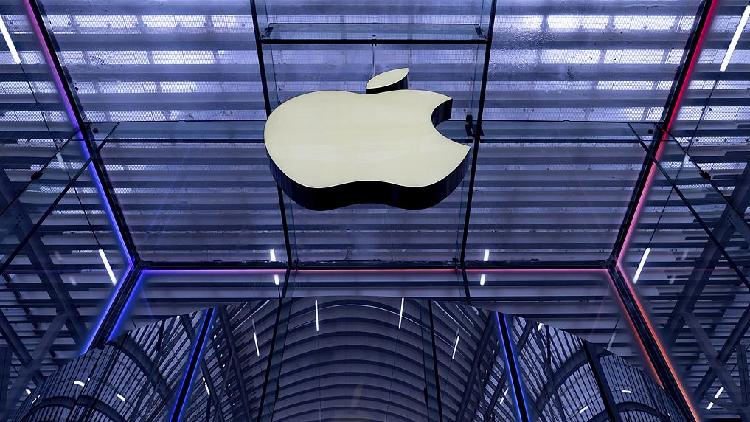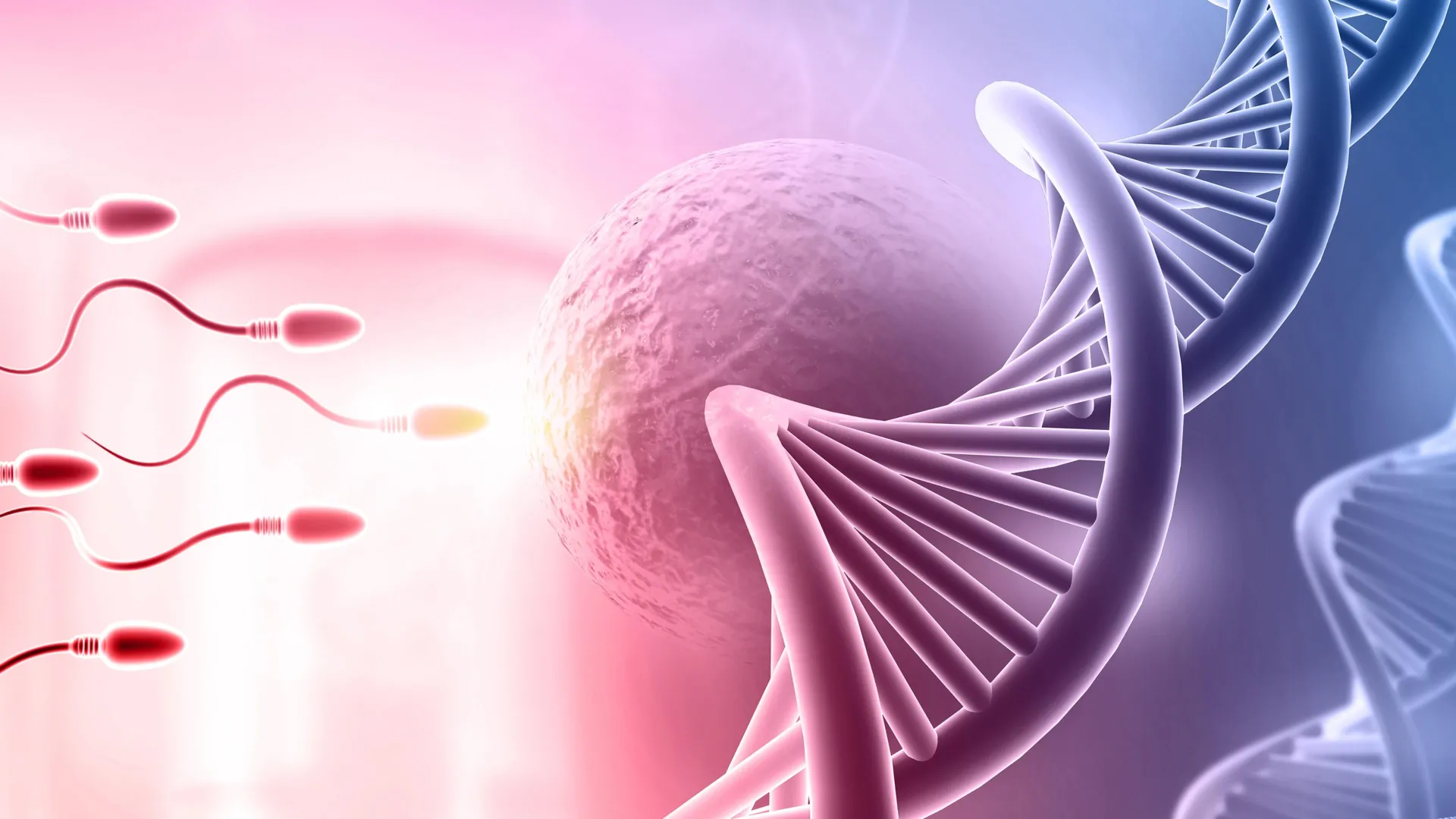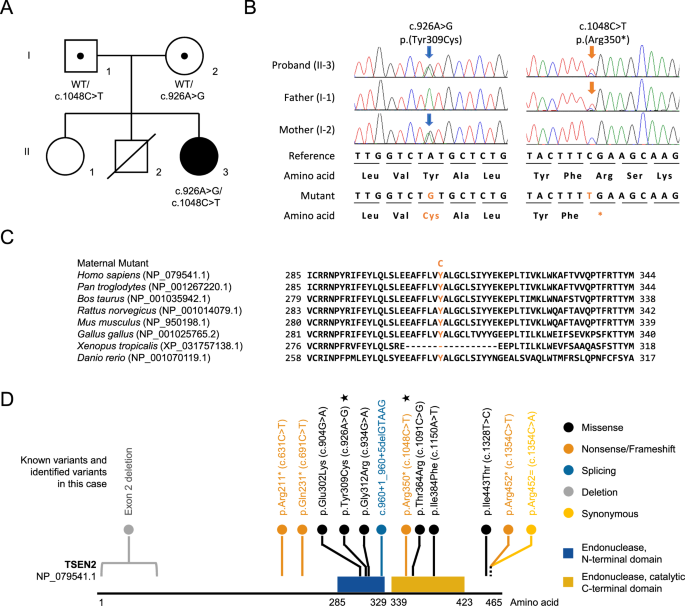- Apple to hold fall event on September 9, new iPhones expected news.cgtn.com
- Apple’s big iPhone launch is coming on September 9. What to expect CNN
- Apple iPhone 17, iPhone 17 Pro Release Date Latest Schedule: What To Expect When Forbes
- Jefferies warns iPhone 17 Pro sales may be the toughest one ever for Apple Investing.com
- After iPhone 17, will Apple discontinue THESE iPhones and other favourite gadgets? financialexpress.com
Author: admin
-

Apple to hold fall event on September 9, new iPhones expected – news.cgtn.com
-

The hidden DNA organizer linking fertility and cancer
A research team at Kyoto University has discovered STAG3-cohesin, a new mitotic cohesin complex that helps establish the unique DNA architecture of spermaotogonial stem cells (SSCs), the stem cells that give rise to sperm. This “DNA organizer” is crucial for sperm production in mice: without STAG3, SSCs cannot differentiate properly, leading to a fertility problem. In humans, the researchers found that STAG3 is highly expressed in immune B cells and in B-cell lymphomas (a type of blood cancer), and blocking it slowed the growth of these cells. This discovery might open the door to new strategies for treating infertility and certain cancers.
This research is led by Prof. Mitinori Saitou, Director/Principal Investigator at the Institute for the Advanced Study of Human Biology (WPI-ASHBi), Kyoto University (also Professor at the Graduate School of Medicine), Dr. Masahiro Nagano (then Assistant Professor at the Graduate School of Medicine, currently Research Fellow at ASHBi and Postdoctoral Researcher at the Massachusetts Institute of Technology), and Dr. Bo Hu (then Ph.D. student, currently Research Fellow at ASHBi). The results of this study will be published online in Nature Structural & Molecular Biology at 10:00 am GMT (6:00 pm Japan Standard Time) on August 25, 2025.
Background
Our bodies contain many different types of cells, yet they all contain the same DNA. What makes each cell type unique is how this DNA is modified, packaged, folded, and organized. Think of DNA as a very long piece of string. Inside every nucleus, about two meters of this DNA string must be folded and stored in a space smaller than the width of a human hair. This folding is highly organized, with special boundaries called insulation that separate different regions of DNA and control which genes are turned on or off. Ring-shaped protein complexes called cohesins serve as the key players that create these boundaries. Cohesin complexes were previously thought to exist in two main forms: mitotic cohesins (contain STAG1 or STAG2 together with RAD21) and meiotic cohesins (contain STAG3 together with REC8 or RAD21L).
Germ cells are unique because they pass DNA to the next generation, and they undergo major changes in DNA folding during development. These cells undergo massive reorganization of their DNA packaging during development. Notably, SSCs have a unique way of organizing their DNA with unusually weak boundaries, but scientists do not yet understand how this happens.
Key findings
Because cohesin complexes contribute to DNA boundaries, and SSCs are mitotically dividing cells before entering meiosis, the research team decided to map where different cohesin proteins were located in SSCs cultured in vitro, and which proteins were present at each site. They found that RAD21, which normally partners with STAG1 or STAG2 in dividing cells, was instead partnering with STAG3. This protein was previously thought to function only during meiosis. Using immunoprecipitation-mass spectrometry (a technique that identifies which proteins stick together), they confirmed that RAD21 and STAG3 form a complex, revealing a new type of cohesin, which they referred to as STAG3-cohesin.
To find out what this new complex does, the researchers created two types of genetically modified SSCs in vitro: one set completely lacked STAG3, while the other contained only STAG3 (without STAG1 or STAG2). They discovered that STAG3-cohesin is responsible for the unusually weak DNA boundaries in SSCs. Most importantly, in mice missing STAG3, the SSCs could not progress from their stem-cell state to the next stage of sperm development in an efficient manner. This led to a fertility problem, showing that STAG3-cohesin does more than organize DNA and is critical for proper germ cell development.
As STAG3 functions in mitotically dividing cells, the team then investigated whether it might also function in other human cell types. By analyzing large datasets of all human cell types, they found that STAG3 is highly expressed in immune B cells and in B-cell lymphomas, a type of blood cancer. Interestingly, blocking STAG3 caused these lymphoma cells to grow much more slowly in laboratory studies, suggesting that STAG3 could be explored as a possible target for future cancer research.
Outlook
This study has revealed STAG3-cohesin as a new type of DNA-organizing protein complex that works very differently from previously known complexes. Because of its unique properties, further research on this complex is expected to advance our understanding of how gene activity is controlled through DNA organization. One of the most striking discoveries was that simply changing STAG3 levels could alter the proportion of stem cells in the testis. This suggests a novel mechanism that regulates the SSC state at the boundary between normal cell division and the start of meiosis.
Beyond germ cells, the discovery that blocking STAG3 slows the growth of B-cell cancers points to a possible role for STAG3 in future cancer research. Although more research is needed to uncover the precise mechanisms, these findings offer new insights that could advance stem cell biology, reproductive medicine, and cancer treatment.
Glossary
- Spermatogonial stem cells (SSCs): The stem cells in the testis that self-renew and also differentiate to give rise to sperm.
- Mitosis: The process by which a cell produces identical copies of itself, resulting in daughter cells with the same genetic information.
- Meiosis: A specialized form of division unique to germ cells, through which sperm or eggs are generated.
- Insulation: The “boundaries” within the 3D structure of DNA. They prevent enhancers (DNA elements that help turn genes on) from influencing genes across the boundary, effectively dividing the genome into separate functional regions.
- B cells: Immune cells that play a central role in antibody production within the immune system.
- Cohesin complex: A ring-shaped protein complex that holds chromatids together and helps organize DNA into loops essential for gene regulation and mitosis.
Continue Reading
-

Pakistan’s Punjab requisitions army as monsoon-swollen rivers trigger flood emergency alert
ISLAMABAD: The United Nations has released $600,000 in emergency relief funds for Pakistan, the UN secretary-general’s spokesperson confirmed this week, as the death toll from deadly monsoon rains and floods across the country crossed 800.
Monsoon rains have wreaked havoc across Pakistan, damaging crops, killing livestock and destroying thousands of houses in the country. Pakistan’s National Disaster Management Authority (NDMA) has reported 802 deaths from monsoon rains and floods since Jun. 26 and 1,088 injuries.
Rain continues to batter several parts of the country, especially its eastern, most populous Punjab province, where rising water levels in the Sutlej and Ravi rivers have prompted authorities to evacuate over 170,000 people from vulnerable areas.
“The [Pakistani] authorities are leading the response, with support from the United Nations and local partners,” Stéphane Dujarric, the UN secretary-general’s spokesperson, told reporters during a media briefing on Monday.
“Over the weekend, Tom Fletcher, our Emergency Relief Coordinator, released $600,000 from the regional pooled fund to support the ongoing efforts.”
Unusually heavy rains since Aug. 15 have killed 489 people and left 348 injured. Pakistan’s northwestern Khyber Pakhtunkhwa (KP) province has reported the highest deaths since mid-August, 408 and 258 injuries according to figures shared by the NDMA.
Dujarric said that according to the UN’s Office for the Coordination of Humanitarian Affairs, Pakistanis affected by the flooding need shelter supplies, medical assistance, cash, hygiene kits, clean drinking water and education.
Pakistan’s top economic decision-making body earlier on Tuesday approved the release of Rs3 billion ($10.8 million) in emergency funds for flood-affected families in the northern Gilgit-Baltistan region.
EVACUATIONS, RISING WATER LEVELS
Separately, the NDMA issued an advance alert to the provincial disaster agency in Punjab, the PDMA, regarding rising water levels in the Sutlej River and potential floods. The alert prompted large-scale evacuation operations in areas near the Sutlej River.
Prime Minister Shehbaz Sharif chaired a meeting to review the flood situation and relief operations across the country, his office said.
Sharif directed that rescue operations in the flood-hit districts of Punjab, affected by the overflowing Sutlej river, be further accelerated, the Prime Minister’s Office (PMO) said.
Officials informed Sharif that residents of vulnerable areas near the Sutlej River have been relocated, and that no loss of life has been reported so far.
“Rescue operations are continuing in flood-affected districts near Sutlej River and so far, 174,074 people have been safely evacuated,” the PMO said.
The prime minister was informed that work to restore power in KP’s flood-affected areas was underway, while in Gilgit-Baltistan, a two-kilometer stretch of the National Highway remains submerged.
“The meeting was informed that in the next 12 to 24 hours that heavy rainfall is expected in Lahore, Gujranwala, Gujrat and Rawalpindi divisions as well as in the districts of Azad Jammu and Kashmir, and parts of Gilgit Baltistan,” Sharif’s office said.
Officials say the ongoing monsoon spell is expected to last until at least Sept. 10, while the NDMA has warned the rains could rival the scale of the catastrophic floods of 2022, which killed more than 1,700 people and caused over $30 billion in damage.
Annual monsoon rains are crucial for Pakistan’s agriculture and water supply but in recent years have also unleashed devastation, intensified by shifting climate patterns.
Despite contributing less than 1 percent of global greenhouse gas emissions, Pakistan ranks among the countries most vulnerable to climate change. In recent years it has endured increasingly erratic weather, including droughts, heatwaves and record-breaking rains that have caused widespread loss of life and damage to property.
Experts warn that without urgent adaptation and mitigation measures, the human and economic toll of climate change in Pakistan will only deepen in the years ahead.Continue Reading
-

PTV gets Rs11 billion subsidy
ISLAMABAD:The government on Tuesday approved a subsidy of Rs11 billion for the Pakistan Television Corporation (PTV) — one-third to be disbursed immediately, to offset the losses it would sustain due to the withdrawal of Rs35 in monthly fee charged through electricity bills.
The Economic Coordination Committee (ECC) of the cabinet considered a summary submitted by the Ministry of Information and Broadcasting for a supplementary grant of Rs11 billion in favour of PTV for tariff adjustment and net metering, said a statement issued by the Ministry of Finance.
It added that the ECC approved Rs3.8 billion while the remaining would be released on a quarterly basis for payment of salaries, pensions and operational expenses of the state broadcaster.
While approving the request, the ECC underscored that it was imperative for PTV to reduce reliance on budgetary support and chart a path towards self-sustainability, the finance ministry said.
The government had abolished the per electricity connection fee of Rs35 from bills last month as part of efforts to lower the cost of electricity for end-consumers. However, this created financial issues for the firm, which is heavily dependent on state dole-outs.
Earlier, Prime Minister Shehbaz Sharif had directed to discontinue the collection of TV licence fee, which the information ministry stated strained PTV’s financial position, resulting in pending liabilities, including unpaid salaries and pensions for three months as well as other expenses.
The PM then directed the Finance Division to allocate a grant of Rs11 billion to PTV for fiscal year 2025-26, which would be released in quarterly tranches, ensuring uninterrupted broadcasting services. For the next three quarters, PTV will receive Rs2.4 billion each quarter.
The ECC meeting, chaired by Finance Minister Muhammad Aurangzeb, also approved guidelines to reduce electricity prices for consumers to the extent of additional money collected on the use of gas by captive power plants (CPPs). As per the guidelines, the National Electric Power Regulatory Authority (Nepra) will revise prices downwards through the monthly fuel price adjustment mechanism.
The finance ministry stated that the ECC approved the mechanism proposed by the Power Division to pass on the benefit of the levy collected from captive power consumers to electricity grid consumers.
Parliament has enacted Off the Grid (Captive Power Plants) Levy Act, 2025 to impose a levy on natural gas-based captive power plants to facilitate their transition to the electricity grid.
The law provides that the concerned divisions shall calculate the rate of levy considering the difference of electricity tariff of the industrial B-3 category notified by Nepra and the self-power generation cost of the captive power plant at the gas tariff notified by the Oil and Gas Regulatory Authority (Ogra).
In accordance with the Act, the levy rate is set initially at a 5% fixed margin above the power tariff, which has increased to 10% from August 1, 2025. From February 1, 2026, the rate will be 15% and from August 1, 2026, it will be 20%.
The Power Division will submit information to Nepra with the request to allow it to be passed on to electricity consumers and accordingly Nepra will issue the determination each month after necessary due diligence.
The benefit of the levy collected in a month will be passed on to power consumers with a lag of two months. Nepra will evaluate the monthly data and determine the per-unit rate of monthly levy benefit for the entitled consumers as per the approved mechanism.
The ECC also considered a summary seeking the review of tariff determination for the Machike-Thalian-Taru Jabba White Oil Pipeline project being developed on a government-to-government basis with Azerbaijan, and approved the terms and conditions proposed by the Petroleum Division to enable the launch of the strategic project. It will further strengthen bilateral friendship, trade and investment ties between Pakistan and Azerbaijan, the finance ministry said.
The ECC reviewed a summary submitted by the Ministry of Kashmir Affairs, Gilgit-Baltistan, and States and Frontier Regions regarding the release of funds for flood relief in Gilgit-Baltistan in line with the prime minister’s directives during his recent visit to the affected region.
It approved the release of Rs3 billion for timely provision of tents, medicines, food and other essential supplies for the affected families, as well as for the reconstruction of damaged infrastructure and early recovery measures to support the affected communities.
Continue Reading
-

CCP seeks ban on Temu e-commerce platform
ISLAMABAD:The Competition Commission of Pakistan (CCP) has asked the Pakistan Telecommunication Authority (PTA) to slap a ban on Chinese e-commerce platform Temu.
According to a letter, a copy of which is available with The Express Tribune, the CCP said it lacked the authority to impose the ban as Temu was not registered in Pakistan, therefore, the PTA should look into the matter.
The CCP highlighted its concerns about Temu’s disruptive presence in Pakistan by referring the matter to the PTA. In its official notice dated August 22, 2025, the CCP acknowledged industry complaints that Temu’s practices were damaging local commerce and undermining consumer rights, while clarifying that only the PTA held the authority to restrict or ban apps under the existing laws.
In their formal complaints, the Pakistan Retail Business Council and the Chainstore Association of Pakistan argued that Temu’s business model relies on predatory pricing and manipulative marketing, creating conditions that are unsustainable for domestic retailers.
By offering goods far below local market prices, Temu has been accused of distorting competition and squeezing out smaller businesses that form the backbone of Pakistan’s retail sector.
Temu, which entered Pakistan just a few months ago, has flooded digital platforms with aggressive advertising, luring customers through steep discounts and gamified promotions that critics say cross the line by manipulating consumers.
Independent sellers have already lodged complaints citing practices such as fake or recycled product reviews, absence of cash-on-delivery option and the lack of local return facilities, all of which leave Pakistani shoppers exposed and unprotected.
Consumer rights advocates warn that Temu’s model not only erodes trust in online commerce but also exploits regulatory loopholes — operating in Pakistan without the same accountability faced by domestic e-commerce players. This two-tiered problem of foreign players operating unchecked while local sellers face compliance obligations is being described by stakeholders as regulatory oversight at the expense of Pakistan’s economy.
Pakistan is not alone in encountering this challenge. Countries such as Indonesia and Vietnam have already moved to curb Temu’s operations, citing risks to fair competition and consumer welfare.
Continue Reading
-

Currency in circulation, deposits stand at Rs39.4tr
KARACHI:Pakistan’s broad money (M2), a key indicator of liquidity in the economy, stood at Rs39.39 trillion as of August 15, 2025, down 0.2% week-on-week (WoW), according to data released by the State Bank of Pakistan (SBP) and compiled by Arif Habib Limited (AHL).
M2 is the most widely used measure of money supply and includes currency in circulation, demand deposits, and time deposits with banks. Economists often track it to assess the availability of money in the economy and its potential impact on inflation, interest rates, and economic activity.
Within M2, the currency in circulation amounted to Rs10.8 trillion, making up 27.4% of the total broad money, slightly lower than the previous week. Meanwhile, total deposits with banks remained steady at Rs28.6 trillion, contributing the bulk share of 72% of M2. Deposits with the SBP also increased modestly to Rs50 billion.
In the current fiscal year to date (FY26TD), the broad money has contracted by 3.3%, reflecting a combination of factors including tight liquidity conditions, cautious lending and fiscal consolidation. Bank deposits have fallen by 5% since June, while the currency in circulation has inched up by 1.4% during the same period.
The Pakistani rupee registered a marginal rise against the US dollar in the inter-bank market on Tuesday, extending its winning streak for the 13th consecutive session. At close, the local currency settled at 281.86 per dollar, appreciating by one paisa versus Monday’s close at 281.87.
The rupee’s steady performance in recent days has been attributed to improved market sentiment, supported by an ongoing crackdown on illegal currency dealers and cross-border smuggling.
On a calendar year-to-date (CYTD) basis, the currency has depreciated by 1.17%, while in the fiscal year to date, it has appreciated by 0.68%, according to Ismail Iqbal Securities.
Gold prices in Pakistan climbed, tracking gains in the international market, where the precious metal rose on safe-haven demand after investor confidence in the US Federal Reserve was shaken by President Donald Trump’s dismissal of a Fed governor.
According to rates issued by the All Pakistan Sarafa Gems and Jewellers Association, the price of gold increased by Rs900 per tola, settling at Rs360,700. Similarly, the price of 10-gram gold rose by Rs772, reaching Rs309,242.
Continue Reading
-

‘Spreads from the top down’
According to an early-August press release from Monash University, a preclinical study recently published in the journal Environment and Health suggests that nanoplastics exposure may contribute to the progression of Alzheimer’s disease.
What’s happening?
The study, co-led by Monash and South China University of Technology, examined how exposure to polystyrene nanoplastics in the environment might affect the way Alzheimer’s disease progresses from the brain to the rest of the body.
To do this, the research team studied mice exposed to polystyrene nanoplastics. Their results indicate that neurological damage caused by nanoplastics isn’t relegated to the brain but extends via the gut-liver-brain axis.
In the mice, “polystyrene nanoplastics aggravated Alzheimer’s-like symptoms,” wrote the co-authors, and prompted immune cell activation in the brain. This, in turn, led to neurodegeneration and neuroinflammation, according to the release, which seemed to contribute to additional health issues, such as fatty liver disease.
Co-author Pu Chun Ke, an adjunct professor at the Monash Institute of Pharmaceutical Sciences, explained in a statement, “Nanoplastics set off a chain reaction whereby Alzheimer’s disease develops and spreads from the top down.”
Why is this research important?
As plastic deteriorates, it breaks down into tiny microplastics and even smaller nanoplastics. These can contaminate soil, water, air, and food systems, eventually ending up in human bodies.
The size of these plastic particles — generally less than 5 millimeters in diameter — can cause them to spread widely and make them difficult to locate and clean up. Because they are so pervasive in the environment, they are nearly unavoidable, meaning most humans may be constantly exposed to a variety of possible sources.
Research into the potential health impacts of microplastics is ongoing, but the material has been found in human blood, lungs, brains, reproductive systems, and breast milk. Scientists are still studying possible links between microplastics, nanoplastics, and multiple health problems, such as heart disease and hormone disruption, so continued research is vital.
What’s being done about plastic pollution?
Experts, communities, governments, and corporations are stepping up to help tackle the widespread issue of plastic pollution.
Unfortunately, another round of United Nations-convened global talks recently failed to reach an agreement to formalize a legally binding treaty — one that could not only regulate recycling and waste management but also ultimately cap plastic production.
While this round of negotiations ended in bitter disappointment for those seeking such caps, concerned residents of countries like the United States — delegates of which opposed production restrictions — are likely to continue to push for effective solutions to the plastic crisis.
Individuals can also help reduce plastic pollution and mitigate their own exposure by recycling their plastic and committing to using less plastic in their daily lives.
Join our free newsletter for weekly updates on the latest innovations improving our lives and shaping our future, and don’t miss this cool list of easy ways to help yourself while helping the planet.
Continue Reading
-

Thai monetary policy should remain accommodative, central bank minutes show
Thailand’s monetary policy should remain accommodative to support the economy and an easing would not significantly increase financial stability risks.
Bloomberg Creative | Bloomberg Creative Photos | Getty Images
Thailand’s monetary policy should remain accommodative to support the economy and an easing would not significantly increase financial stability risks, the minutes of the Bank of Thailand’s August 13 policy meeting showed on Wednesday.
At the meeting, the monetary policy committee voted unanimously to cut the one-day repurchase rate by 25 basis points to a near three-year low of 1.50%.
“Going forward, the Committee viewed that monetary policy should remain accommodative to support the economy,” the minutes said.
“At the same time, it was important to ensure macro-financial stability, while taking into account the limited policy space.”
The August cut was the fourth reduction in 10 months to support a sluggish economy grappling with U.S. tariffs and softer tourism.
At the review, the central bank said Southeast Asia’s second-largest economy was still expected to grow close to its forecasts of 2.3% for 2025 and 1.7% for next year. Last year’s growth of 2.5% lagged behind regional peers.
“Looking ahead, the economy was expected to moderate relative to the first half of the year, reflecting the impact of U.S. trade policies,” the minutes said.
“These measures would exacerbate structural challenges and weigh on Thailand’s competitiveness,” they added.
The next policy review is on October 8, and some economists expect a further rate cut.
Continue Reading
-

Looking Ahead: Impact of Tariffs on Manufacturing Businesses | Insight
Import tariffs have become the priority trade issue since President Donald Trump took office on January 20, 2025, with a wide variety of measures announced and imposed by the US and other countries. These tariffs have the potential to disrupt all industries; however, they pose unique challenges for the manufacturing sector, in particular in areas such as automotive, where specific sectoral duties are also proposed. We have set out below i) a summary of key takeaways on the tariff landscape, as well as ii) specific takeaways regarding the manufacturing sector.
Tariffs
Since taking office, President Trump has announced a multitude of tariff measures on a variety of countries and products. This has generated uncertainty, with measures being announced, implemented, and suspended on short notice. In addition there is ongoing court action in the US as to the US Administration’s authority to impose wide-ranging tariffs that impact global trade, the outcome of which is awaited.
At the time of publication, a universal 10% tariff has been imposed against all territories with perceived trade imbalances with the US, with higher ‘reciprocal’ tariffs on certain jurisdictions such as China. In addition, significant tariffs have been imposed on certain products imported into the US, such as steel and aluminium (50% – other than from the UK where a trade deal reduces the tariff to 25%) and on certain sectors, such as the automotive sector (25% – again with a reduced tariff deal quota for the UK and the countries having signed a Trade deal with the US – including the EU & Japan). Other countries, who are hoping to sign trade deals with the US have either announced their own retaliatory measures or the continuation of negotiations for a trade deal in response.
Increased tariffs mean that industrial products and components from impacted jurisdictions are subject to higher customs duties on import into the US (and into any other jurisdictions that impose retaliatory tariffs against US originating products). Customs duty is paid as a percentage of the customs value of the imported goods and is a cost that will be borne by the importer (depending on its contractual terms with its customer, it may be possible for this cost to be passed on to the latter)…and will consequently hit the profit margin of the concerned stakeholders.
The implications of tariffs are wide ranging: the volatile nature of the current tariff landscape has created significant uncertainty in the markets, whilst tariffs on imports from major US trading partners like China, Canada, and Mexico may lead to increased consumer prices whilst straining key trading relationships. For automotive businesses territories such as Mexico and China are key manufacturing bases where the US tariff impositions have now led companies in that sector to re-evaluate their manufacturing locations.
Increased costs from tariffs can impact transfer pricing arrangements and compliance with the arm’s length principle. Companies need to determine which entity should bear the increased costs to ensure they remain tax deductible and align with group transfer pricing policies. Tariffs can also lead to potential double taxation issues, as different tax authorities may interpret cost allocation differently, possibly resulting in disputes and the need for relief through mutual agreement procedures.
In addition, tariff proposals are having an effect on M&A activity. Buyers are unable to confirm their business case for acquisitions and the pricing of a deal as the future profitability of the target business may be impacted in a myriad of ways. For example, if the target company’s supply chain includes the production of goods in Mexico which are then imported into the US, this could now be subject to a tariff and further erode the profit margin on such products. As businesses typically trade on a multiple of EBITDA, this could have a substantial effect on the pricing of deals.
Manufacturing impacts
- Increased Costs and Prices: Tariffs will lead to higher costs for the importer, as noted above, and can lead to higher prices which are often borne by the end consumer. Since manufactured products and often involve components sourced from other countries, these increased costs could make production and aftermarket more expensive, for businesses and consumers alike.
- Supply Chain Disruptions: The global nature of many manufacturing supply chains means that tariffs could cause significant disruptions. Many manufactured products are the result of an internationally connected supply chain and sourcing materials may become more difficult and expensive, potentially leading to shortage problems. The re-routing of supplies at short notice to avoid tariff hits and the increased administration involved in changing supply routes are leading to backlogs and delays in delivery at ports as well.
- Manufacturing Location Strategies: the US administration’s stated aim of tariffs is to bolster US domestic production and incentivise companies to relocate their manufacturing operations to the US, also with the provision of various tax incentives under the One Big Beautiful Bill Act. While this could reduce dependency on foreign suppliers, it may also lead to higher production costs and longer timelines for product availability. The timescales for US relocation for companies opting to do so could prove extensive, and it is not clear in all cases – even considering the tariffs – whether US domestic production would prove cheaper than the vast economies of scale available in other countries, such as China.
- Materials, Parts and Semi-finished products scarcity and quality reduction: In response to escalating US tariffs on imported components, manufacturing companies are increasingly considering cost-cutting measures, including the use of lower-grade parts and semi-finished products. The tariffs have significantly raised the cost of high-quality imports, prompting manufacturers to explore alternatives that meet minimum specifications, but which may compromise long-term durability and performance.
At the same time, the industry is grappling with a scarcity of parts and materials. This shortage stems from disrupted global supply chains, trade route realignments, and reduced availability of tariff-exempt sources. Many suppliers have scaled back production or shifted focus to less affected markets, while manufacturers face delays and rising competition for limited resources. The result is a constrained supply environment that challenges production schedules and quality assurance across the IMT sector.
Automotive
Targeted sectoral tariffs are also likely to have a significant impact on the automotive sector which depends on complex supply chains and offshore manufacturing, often in countries such as Mexico and China which are also key targets for US reciprocal tariffs. Further, the 25% tariffs on steel and aluminium-containing products (so called “derivative” products) that took effect at 12:01am March 12, 2025, also impact the automotive sector as many components contain steel and aluminium. (The 25% tariffs apply to the value of the steel/aluminium in such components.)
Many automotive components are manufactured in countries which are subject to proposed US tariff hikes and the tariffs can lead to increased costs and potential shortages. Many businesses are therefore actively re-evaluating their manufacturing strategies to diversify their production and supply bases, including considering countries in South East Asia and Eastern Europe. However where they have established supply chains and infrastructure in territories in which they have invested over long periods of time it may be financially and logistically challenging to relocate.
We finally also would like to stress the fact that the recent surge in US tariffs on Chinese-made vehicles has significantly disrupted global automotive trade flows. As Chinese automakers face mounting barriers to the US market, they are redirecting excess inventory toward Europe, where entry conditions remain comparatively more favorable. This shift exposes the EU to a potential influx of competitively priced Chinese vehicles, particularly electric models, which could challenge domestic manufacturers already grappling with rising production costs and supply chain disruptions.
European carmakers, long reliant on Chinese components and joint ventures, now face a dual pressure: higher input costs due to tariffs and intensified competition from Chinese brands seeking new markets for their surplus stock. The result is a strategic vulnerability that could reshape the EU automotive landscape.
Mitigation Strategies
Based on possible impacts, mitigation strategies should be taken into consideration (e.g. unbundling of transfer prices or use of alternative customs valuation methodologies to optimize customs values (read our blog, Trump Tariffs: Customs Valuation and TP Impacts and Mitigation Strategies). Businesses should be aware of their import and export volumes in the US and elsewhere, broken down by products and current tariff rates. This allows businesses to quickly calculate possible impacts on additional customs duties in both regions as a first step on the products targeted by the lists mentioned above and prioritize mitigation strategies.
Businesses should also audit existing contracts and standard terms for level of exposure to tariff changes throughout their supply chains, and their ability within the contracts to mitigate that exposure. Key clauses to review include:
- Pricing
- Material Adverse Change
- Change Control
- Change in Law
- Termination
- Force Majeure
Baker McKenzie has extensive experience with assisting clients in navigating and mitigating tariffs and trade-related actions, as well as conducting reviews of intercompany valuations on imports.
Continue Reading
-

Biallelic TSEN2 variants causing pontocerebellar hypoplasia type 2
Barth PG. Pontocerebellar hypoplasias. An overview of a group of inherited neurodegenerative disorders with fetal onset. Brain Dev. 1993;15:411–22.
Google Scholar
Ghasemi MR, Tehrani Fateh S, Moeinafshar A, Sadeghi H, Karimzadeh P, Mirfakhraie R, et al. Broadening the phenotype and genotype spectrum of novel mutations in pontocerebellar hypoplasia with a comprehensive molecular literature review. BMC Med Genom. 2024;17:51.
Kagermeier T, Hauser S, Sarieva K, Laugwitz L, Groeschel S, Janzarik WG, et al. Human organoid model of pontocerebellar hypoplasia 2a recapitulates brain region-specific size differences. Dis Model Mech. 2024;17:dmm050740.
Budde BS, Namavar Y, Barth PG, Poll-The BT, Nürnberg G, Becker C, et al. tRNA splicing endonuclease mutations cause pontocerebellar hypoplasia. Nat Genet. 2008;40:1113–8.
Google Scholar
Alazami AM, Patel N, Shamseldin HE, Anazi S, Al-Dosari MS, Alzahrani F, et al. Accelerating novel candidate gene discovery in neurogenetic disorders via whole-exome sequencing of prescreened multiplex consanguineous families. Cell Rep. 2015;10:148–61.
Google Scholar
Paushkin SV, Patel M, Furia BS, Peltz SW, Trotta CR. Identification of a human endonuclease complex reveals a link between tRNA splicing and pre-mRNA 3’ end formation. Cell. 2004;117:311–21.
Google Scholar
Namavar Y, Barth PG, Kasher PR, van Ruissen F, Brockmann K, Bernert G, et al. Clinical, neuroradiological and genetic findings in pontocerebellar hypoplasia. Brain. 2011;134:143–56.
Google Scholar
Bierhals T, Korenke GC, Uyanik G, Kutsche K. Pontocerebellar hypoplasia type 2 and TSEN2: review of the literature and two novel mutations. Eur J Med Genet. 2013;56:325–30.
Google Scholar
Ganapathy A, Mishra A, Soni MR, Kumar P, Sadagopan M, Kanthi AV, et al. Multi-gene testing in neurological disorders showed an improved diagnostic yield: data from over 1000 Indian patients. J Neurol. 2019;266:1919–26.
Google Scholar
Issa MY, Chechlacz Z, Stanley V, George RD, McEvoy-Venneri J, Belandres D, et al. Molecular diagnosis in recessive pediatric neurogenetic disease can help reduce disease recurrence in families. BMC Med Genom. 2020;13:68.
Google Scholar
Wang Q, Tang X, Yang K, Huo X, Zhang H, Ding K, et al. Deep phenotyping and whole-exome sequencing improved the diagnostic yield for nuclear pedigrees with neurodevelopmental disorders. Mol Genet Genom Med. 2022;10:e1918.
Cavusoglu D, Ozturk G, Turkdogan D, Kurul SH, Yis U, Komur M, et al. Evaluation of the patients with the diagnosis of pontocerebellar hypoplasia: a multicenter national study. Cerebellum. 2024;23:1950–65.
Google Scholar
Khalaf T, Al Ojaimi M, Saleh DA, Sulaiman A, Sohal AP, Khan A, et al. The utility of exome sequencing in diagnosing pediatric neurodevelopmental disorders in a highly consanguineous population. Clin Genet. 2024;106:82–89.
Google Scholar
Zhang X, Yang F, Zhan X, Bian T, Xing Z, Lu Y, et al. Structural basis of pre-tRNA intron removal by human tRNA splicing endonuclease. Mol Cell. 2023;83:1328–39.e4.
Google Scholar
Guerois R, Nielsen JE, Serrano L. Predicting changes in the stability of proteins and protein complexes: a study of more than 1000 mutations. J Mol Biol. 2002;320:369–87.
Google Scholar
Schymkowitz J, Borg J, Stricher F, Nys R, Rousseau F, Serrano L. The FoldX web server: an online force field. Nucleic Acids Res. 2005;33:W382–8.
Google Scholar
Continue Reading